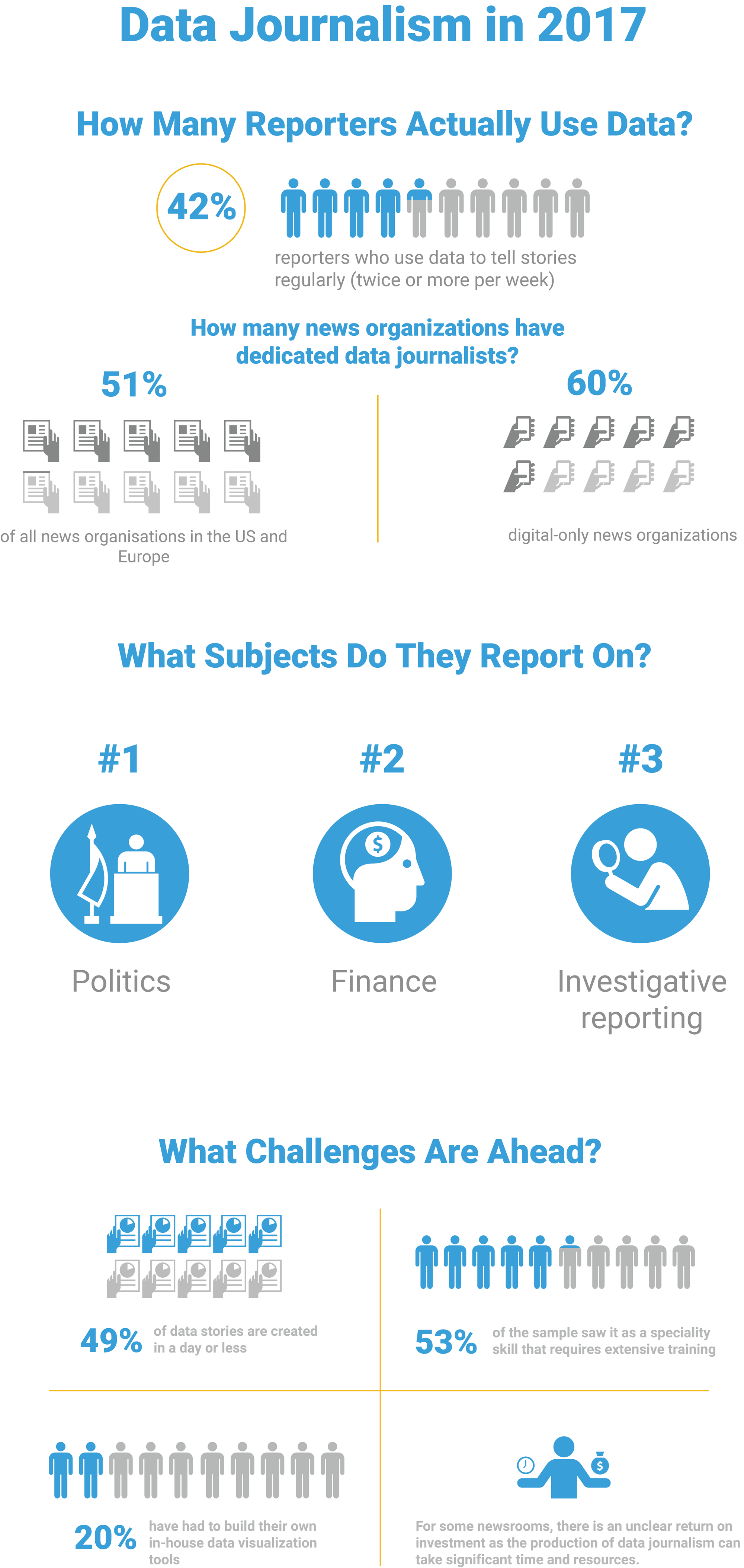A just-released study offers striking confirmation that for many journalists, data-based reporting has become more ingrained in the newsroom.
The study, one of the first comprehensive studies of the field undertaken by Google News Lab and PolicyViz, showed that 42 percent of respondents said they use data regularly to tell stories, and 51 percent of news organizations have a dedicated data journalist on staff. The study was released Monday.
The research delved into questions such as how big is the field, what challenges do data journalists face and how is it going to change. The researchers used a series of in-depth qualitative interviews and a wide-reaching online survey to better understand how journalists use data in the newsroom to tell stories. The analysis offers a sort of “state of the union of data journalism in 2017,” according to a news release, and highlights key challenges going forward.
The study found that many respondents — editors, journalists, video journalists and designers — are motivated to use data for reporting due to evolving norms around news consumption, changes in levels of trust in media and the rise of misinformation online. As one respondent put it, “Data is a good way of getting to the truth of things … in this post-truth era, this work is increasingly important. We are all desperately searching for facts.” Many journalists mentioned they have a role and responsibility to keep debate rooted in facts.

More than half of respondents, said the release, want their organizations to be using more data to tell stories. But, there are barriers that limit the use of data in newsrooms. For example:
• Some 53% of the sample saw it as a speciality skill that requires extensive training, and not something all journalists have been able to pick up easily.
• Survey respondents also discussed the time pressures they face as well as bottlenecks in the editorial process as a result of the limited bandwidth from dedicated data journalists who can clean, process, and analyze data. The study found that 49 percent of data stories are created in a day or less.
• The research also found that data visualization tools are not keeping up with the pace of innovation. As a result, reporters are building their own solutions: a fifth of data journalists use in-house tools and software.
• For some newsrooms, there is an unclear return on investment as the production of data journalism can take significant time and resources.
Despite these challenges, data journalism in 2017 has become more mainstream than at any other time in its history. Newsrooms are producing work that helps explain the world around us, said the release. Pieces like NPR’s First presidential debate fact check or Berliner Morgenpost’s It was not always the East enrich stories and give meaning to the numbers. The Globe and Mail’s Unfounded showcased the power of investigative reporting.
Read more about Google News Lab and the tools it uses.






